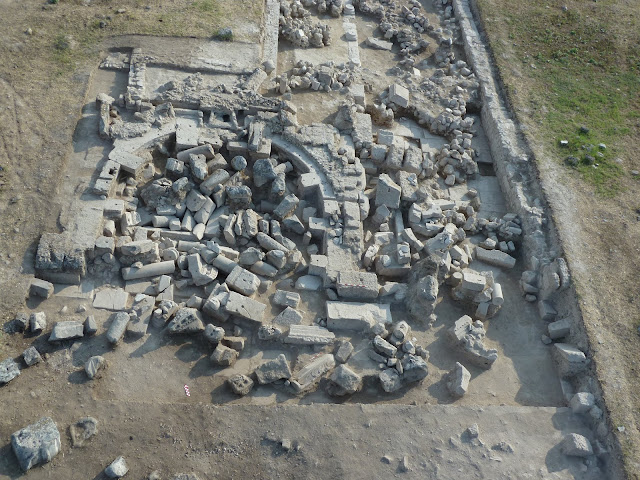The Nymphaeum of Trajan was unearthed at the southern end of the West Portico of the Stadium Street, bordering the street and the portico connected to it at the southern end. The monumental fountain has a single-storeyed façade with a large square in front of the façade. The fountain, which has a rectangular plan on the exterior, has a façade animated by an apsidal pool and a colonnaded gallery on the interior, which was widely built in the Roman Empire at the end of the 1st century AD. In the monumental Nymphaeum structure, the power of both the Roman Empire and Laodikeia was exhibited to the public as political propaganda with four granite and eight marble columns and pedimented facades on both sides in front. The water law unearthed on the eastern wing of the façade facing the square provides important information about the use of water in the city, its cleanliness, the protection of the line, its distribution, the nature of the officials supervising it, and the penalties and prohibitions to be imposed on those who violate the rules, as well as showing that the monumental fountain was built in 113-114 AD during the reign of Emperor Trajan (98-117 AD). The group sculpture of Emperor Traian and the Daker (Dacia) captive in the pediment carried by two columns, which are higher than the others and arranged in the form of a temple pediment on the main façade of the fountain, reveals the importance of the structure. On the other hand, water was provided from the north side of the fountain, an arched pool at the southern end of the Stadium Street West Portico, and water was provided on three sides, one of which was rectangular in plan, on the east and west sides. The main pool provided water to the part facing the square in the south front.
It is understood from the crosses engraved on the parapets that the monumental fountain structure was used for a while more in the 4th century AD due to the liberalization of Christianity (313 AD). Due to the importance of the square and the construction of an administrative building to the south and official offices on both sides of the square in the 5th century AD, the apsidal pool was converted into an exedra for seating. During this phase, the rectangular pool on the east side was enlarged, two small pools were built on the southwest side, and a small water terminal was created in the north by installing a system of funnels supplying water in different directions. In this use, the sculpture group consisting of Emperor Trajan and the captive was continued to be exhibited in the exedra since it was likened to Constantine the Great who freed Christianity. The exedra completely lost its function as a result of the collapse of the columned gallery on the rear façade into the building with the earthquake in 494 AD.





No comments:
Post a Comment